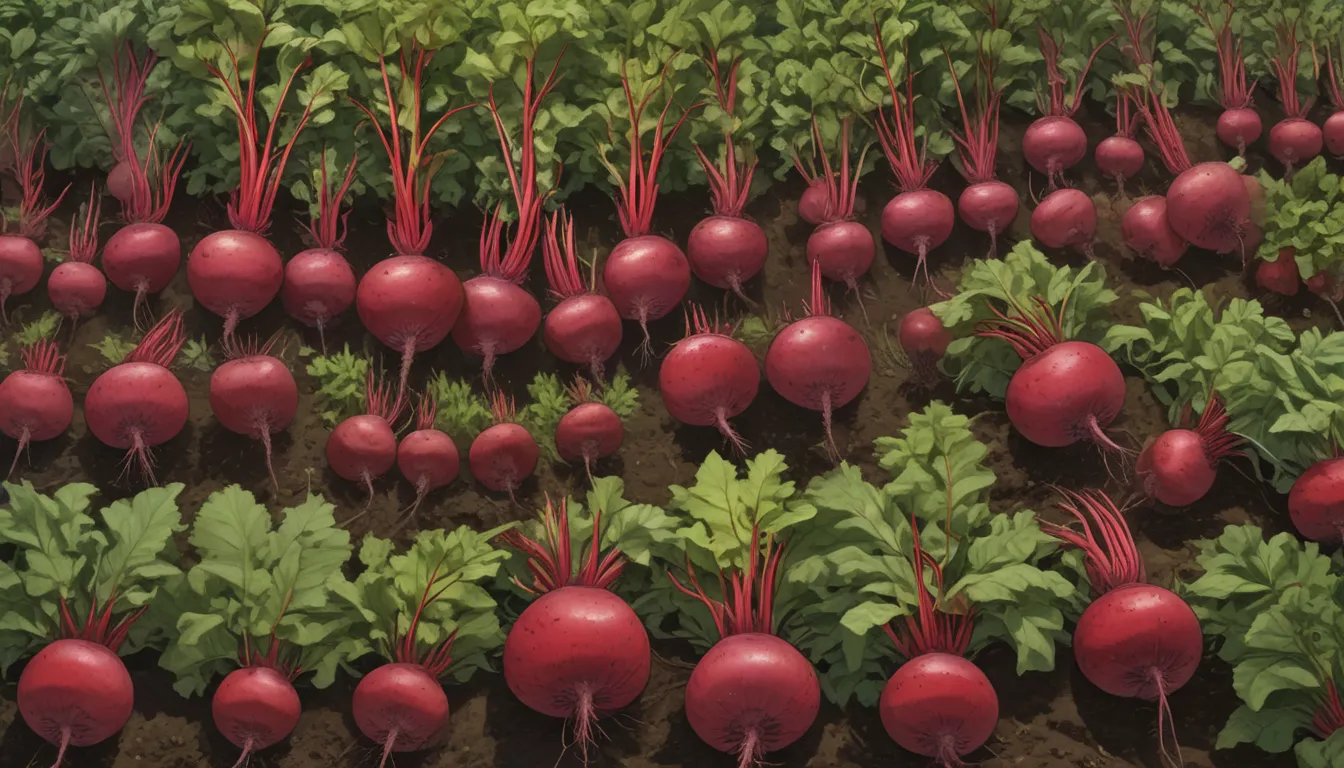A Comprehensive Guide on Planting and Growing Beets

Introducing Beets
As the summer season wanes and the cooler weather sets in, gardeners begin to look forward to a new phase of planting. While the past months have been dedicated to tending to summer crops, it’s time to prepare for the autumn harvest by making room for a fresh lineup of cool-season vegetables.
Among the array of choices available for planting during this time, beets stand out as a vibrant and versatile vegetable that excites many gardeners. Beets are known for their earthy flavor and nutrient-rich composition, offering both tasty roots and leafy greens packed with essential vitamins and minerals.
Did you know that beets are closely related to spinach, quinoa, and amaranth? All of these fall under the category of goosefoot vegetables, sharing a botanical family lineage that traces back to the Mediterranean coast.
Chard, a close relative of beets, also belongs to the same species – Beta vulgaris – and shares a striking resemblance to beet greens. This rich history and lineage add depth and uniqueness to the cultivation of this colorful vegetable.
Finding the Right Spot to Plant Beets
Prior to planting beets, consider the following factors to ensure optimal growth and yield:
- Location: Choose an open, sunny spot with some shade in the late afternoon or early morning.
- Soil: Opt for well-draining, fertile, loamy soil enriched with compost and nitrogen. Ensure adequate levels of phosphorus and potassium for healthy root development, as beets thrive with ample potassium.
- pH Level: Aim for a neutral pH ranging from 6.5 to 7.5 to create an ideal environment for beet growth.
- Temperature: Beets prefer mild temperatures around 60°F typical of spring or fall, with the ability to withstand light frosts (28-32°F). Avoid planting too early in spring or too late in fall in areas with harsh winters.
When it comes to planting beets, direct seeding is the preferred method, especially for a seamless and successful growth process. However, transplanting may also be an option with careful attention to timing and seedling care.
Propagating Beets: A Step-by-Step Guide
To initiate the growth process, follow these steps for effective seed propagation:
- Soaking: Start by soaking beet seeds in warm water for increased germination rates. Alternatively, scarification methods can be used to enhance seed casing opening for optimal growth.
- Sowing: Plant soaked seeds in prepared soil, ensuring ideal conditions for germination. For transplanting, follow precise steps to transfer seedlings successfully into outdoor beds or containers.
Transplanting, though unconventional for beets, can yield promising results with proper care and attention to seedling health. By adhering to specific guidelines and techniques, gardeners can experiment with new methods to accelerate growth and produce robust plants.
Cultivating a Bounty of Varieties
When selecting beet cultivars, consider planting a diverse assortment for a vibrant and colorful garden. Popular varieties include Detroit Dark Red, Avalanche, and Ruby Queen, each offering distinct flavors and characteristics suitable for different culinary uses.
With varying maturity rates and growth patterns, these cultivars present exciting opportunities for exploration and experimentation in the garden. By adopting a mix-and-match approach, gardeners can create a unique beet collection to elevate their harvests and culinary creations.
Tackling Pests and Ailments
Despite its robust nature, beets are susceptible to pests and diseases that can threaten crop health and yield. Common pests such as flea beetles, cabbage loopers, and blister beetles can wreak havoc on beet plants, requiring proactive pest management strategies.
Furthermore, diseases like damping off, curly top virus, and cercospora leaf spot pose additional challenges that demand vigilance and preventive measures to safeguard beet crops. By identifying early signs of infestation and infection, gardeners can implement effective control measures and maintain plant health throughout the growing season.
Harvesting, Storing, and Enjoying Beets
As the culmination of a successful growing season, harvesting beets marks the transition from garden to table. By carefully uprooting mature roots and preserving fresh greens, gardeners can harvest a bounty of beets for immediate consumption or long-term storage.
Storing beets in a cool, dry environment ensures prolonged freshness and quality, allowing for continued enjoyment of homegrown produce. With an array of cooking methods and recipe ideas available, beets offer endless culinary possibilities, from roasted roots to sautéed greens and vibrant salads.
Conclusion: Sweet Success with Beets
In conclusion, beets hold a special place in the hearts of gardeners for their versatility, resilience, and nutritional value. By incorporating beets into their planting plans, gardeners can experience the joy of growing and enjoying this vibrant vegetable throughout the year.
Through careful cultivation, diligent pest management, and creative culinary exploration, beets can enrich garden spaces and dining tables with their distinctive flavors and vibrant colors. With the right knowledge and techniques, gardeners can embrace the beet with confidence and enthusiasm, transforming their harvests into delightful culinary creations.
So, why not embark on a beet-growing journey today and reap the sweet rewards of a bountiful beet harvest? Join the beet enthusiasts and savor the delights of this beloved vegetable, one root at a time!





